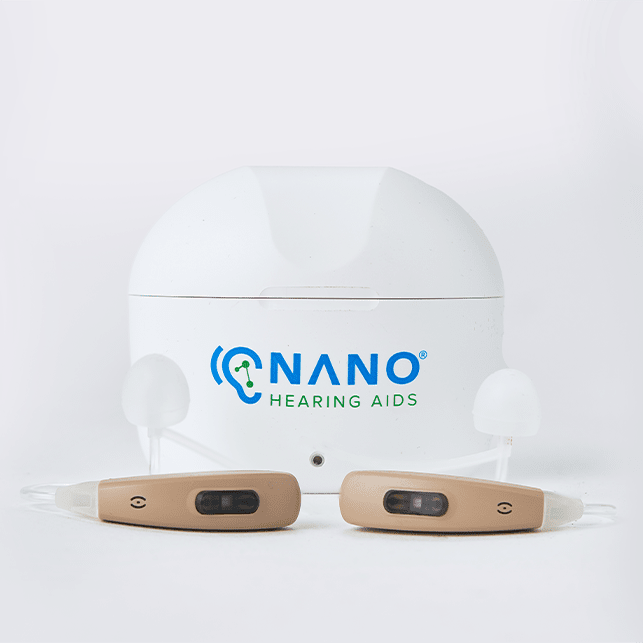If you’re experiencing hearing loss, finding the right hearing aids can make a huge difference in your life. From enhancing communication to providing clarity in noisy environments, hearing aids offer a range of benefits. Here are seven important things you need to know about hearing aids to help you make an informed decision on which ones are best for you.
7 Things To Know About Hearing Aids
1. Hearing Aids Work by Amplifying Sound
Hearing aids are small electronic devices designed to amplify sound, helping you hear better in various situations. They consist of a microphone that picks up sound, an amplifier that shapes and amplifies sound, and a speaker that sends the sound into your ear canal. With advancements in technology, modern hearing aids have become more sophisticated, offering features like noise reduction and digital processing to improve sound quality.
2. Hearing Aids Come in a Variety of Styles
There are several hearing aid styles available, each designed to meet different needs and preferences. The most common styles include:
3. OTC Hearing Aids Don't Require a Prescription
OTC hearing aids are accessible solutions that don’t require a prescription, a hearing test, or a visit to a hearing healthcare professional. You can buy them online or at retail as long as you are at least 18 years old and have perceived mild to moderate hearing loss. Symptoms of this type of hearing loss can include difficulty hearing in noisy environments, needing to ask people to repeat themselves frequently, and trouble following conversations in groups.

4. Hearing Tests Are Needed For Severe Hearing Loss
If you think your hearing loss symptoms might be severe, you'll need to visit a hearing healthcare professional for a hearing test. Symptoms of severe hearing loss include difficulty understanding speech without visual cues, needing to turn the TV volume extremely high, and struggling to hear in quiet settings. If you suspect severe hearing loss, a hearing care professional can recommend the best solutions, which might include prescription hearing aids.
5. Hearing Aids Can Be Affordable
Many people aren't aware that hearing aids can be affordable, especially since prescription hearing aids tend to be costly. However, OTC hearing aids offer a much more financially accessible alternative. In fact, several high-quality OTC hearing aids cost less than $1,000 or even less than $500.
Most of these hearing aids also come with trial, or money back guarantees, warranties, and support, adding to the overall value you get when buying a hearing aid that is OTC.
6. Modern Technology Enhances Hearing Aids
Many of today's hearing aids are equipped with advanced technology to enhance your listening experience. Features such as noise reduction technology help filter out background noise and focus on speech, making it easier for you to communicate in noisy environments. This technology can potentially improve your ability to understand conversations, even in challenging settings. Some hearing aids also have Bluetooth functionality, allowing you to connect seamlessly to smartphones, TVs, and other devices. This means you can listen to your favorite music or take phone calls directly through your hearing aids, making it easier to stay connected and enjoy your audio content on the go. More advanced OTC hearing aids are considered “self-fitting,” which includes an automatic fit to a self-administered hearing test from a mobile app. These hearing aids are on the higher end of the OTC price spectrum.
7. Adjusting To Hearing Aids Takes Time
Adjusting to your new hearing aids can take several days or longer. Initially, sounds might seem louder or different than you remember, and it might take weeks to fully adjust to the way your hearing aids amplify sound. Quality OTC hearing aids offer features such as volume control and program selection to try and reach your specific hearing needs. Patience and consistent use are key to successfully adapting to your hearing aids and enjoying improved hearing.
Choosing the right hearing aid can potentially enhance your quality of life by improving your ability to hear and communicate. By understanding how hearing aids work, exploring different styles, and considering the latest technology, you can make an informed decision that meets your hearing needs.

Amplifying Sound

Variety of Styles

Don't Require a Prescription

Takes Time

Hearing Test

Budget Friendly

Modern Tech

Hearing Test

Budget Friendly

Modern Tech
Nano OTC Hearing Aids
Many people with perceived mild to moderate hearing loss have found it beneficial to wear hearing aids that are OTC, as they can be a great solution for improving hearing. These FDA-regulated devices don't need a prescription, hearing exam, or doctor's appointment. You can try them in the comfort of your home, and you can adjust the volume to suit your specific needs.
With Nano OTC hearing aids, you simply pick the best dome size for your ears, turn them on, and put them in. Keep in mind it might take several days or weeks for your ears and brain to get used to them, which is why Nano OTC Hearing Aids comes with a 45-day money-back guarantee and free 24/7 lifetime support.



